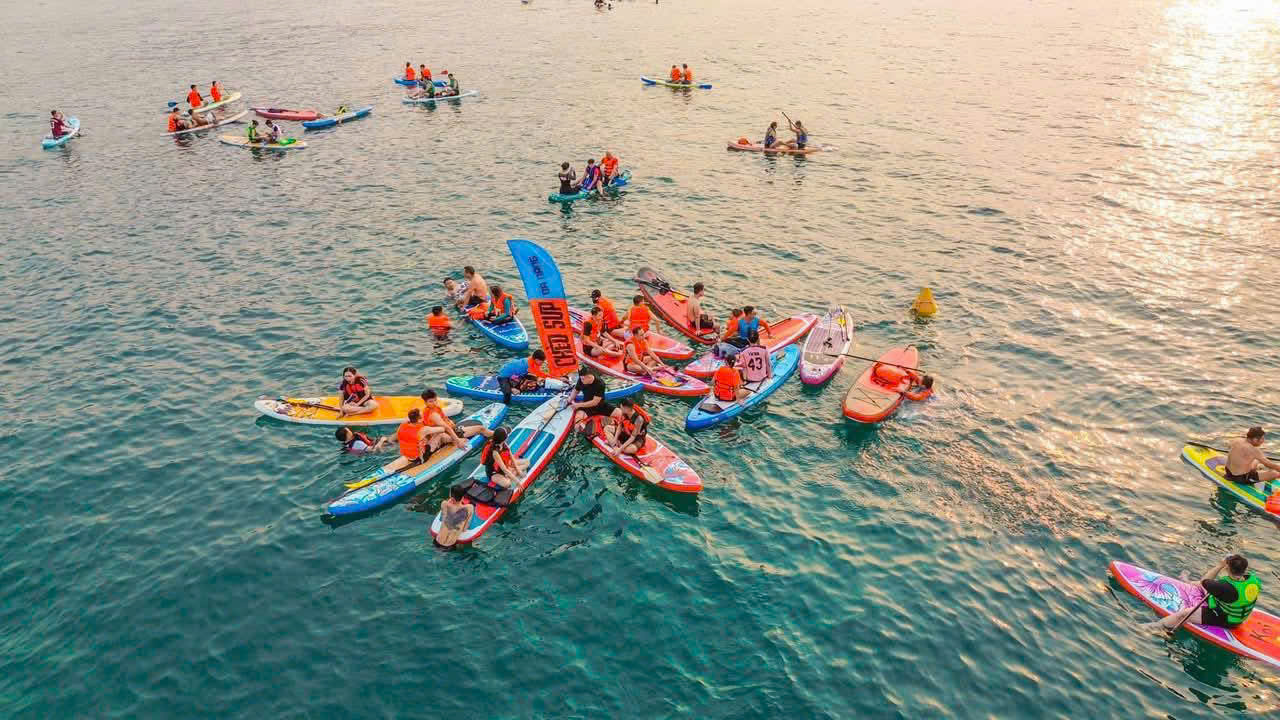Stand-up paddleboarding (SUP) is a popular water sport accessible to both beginners and experienced paddlers. However, safety is paramount, and understanding key precautions before entering the water is crucial.
 |
SUP on the Han River in Da Nang. Photo: Nguyen Lan Bao |
SUP on the Han River in Da Nang. Photo: Nguyen Lan Bao
Nguyen Lan Bao, a Da Nang resident with over 7 years of SUP experience on the Han River and My Khe Beach, offers valuable safety advice for paddleboarders.
Before heading out, inspect your equipment thoroughly. Whether using an inflatable or hardboard, a pre-check is essential. For inflatables, ensure proper inflation (typically 12-15 PSI), check for leaks, and examine the valve and body for damage, blisters, or loose seams. For hardboards, look for cracks, breaks, or damage to the deck pad. The board's surface should be dry and offer good grip to prevent slipping.
Safety equipment is non-negotiable. Regardless of your location (ocean, lake, or river), wear a properly fitted life jacket and a leash connecting you to the board to prevent drifting if you fall. Always wear a life jacket throughout your SUP session, even if you're a confident swimmer. Ensure it's securely fastened and fits snugly. Also, double-check your board, paddle, and accessories.
Mastering balance and boarding is key. Beginners should start by kneeling on the board to get a feel for the balance. Once comfortable, stand up slowly, keeping your eyes forward, feet shoulder-width apart, and avoid looking down. For added safety, especially for children or less experienced paddlers, sitting while paddling is recommended.
Use proper paddling technique. Engage your entire body, not just your arms, to reduce fatigue and maintain a steady course. Switch sides every few strokes to prevent veering off course.
Be aware of weather and water conditions. Check the forecast beforehand, especially wind direction and wave conditions. Avoid paddling in thunderstorms, strong winds, or rapid currents. In unfamiliar waters, consult locals or guides about potential hazards like currents, submerged rocks, or dangerous areas.
Avoid paddling alone in remote areas. Beginners should paddle in groups or with a guide for assistance in case of emergencies. If paddling solo is unavoidable, inform someone of your location and estimated return time.
Maintain distance and stay alert. Keep a safe distance from other watercraft like motorboats and canoes to avoid collisions. In crowded areas, constant vigilance is necessary to prevent collisions with other paddlers or being swept away by currents.
Stay close to your guide. Pay close attention to initial instructions and follow commands during your session. If you encounter problems (strong winds, loss of balance, falling into the water), signal for help instead of panicking. Avoid carrying phones, wallets, or sunglasses without waterproof protection.
Maintain your physical and mental well-being. SUP requires stamina and balance. Avoid paddling after a large meal, consuming alcohol, or when feeling fatigued. If you feel exhausted, rest on the shore instead of pushing yourself.
SUP offers relaxation, exercise, and connection with nature. However, preparation and caution are vital for a safe and enjoyable experience.
Tuan Anh












